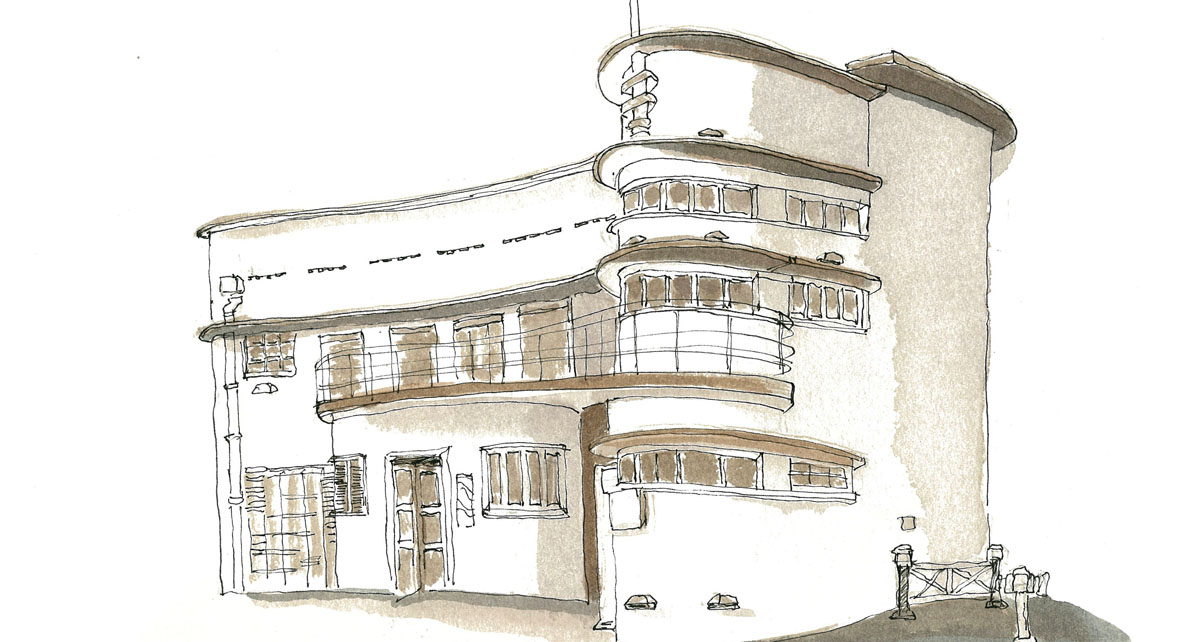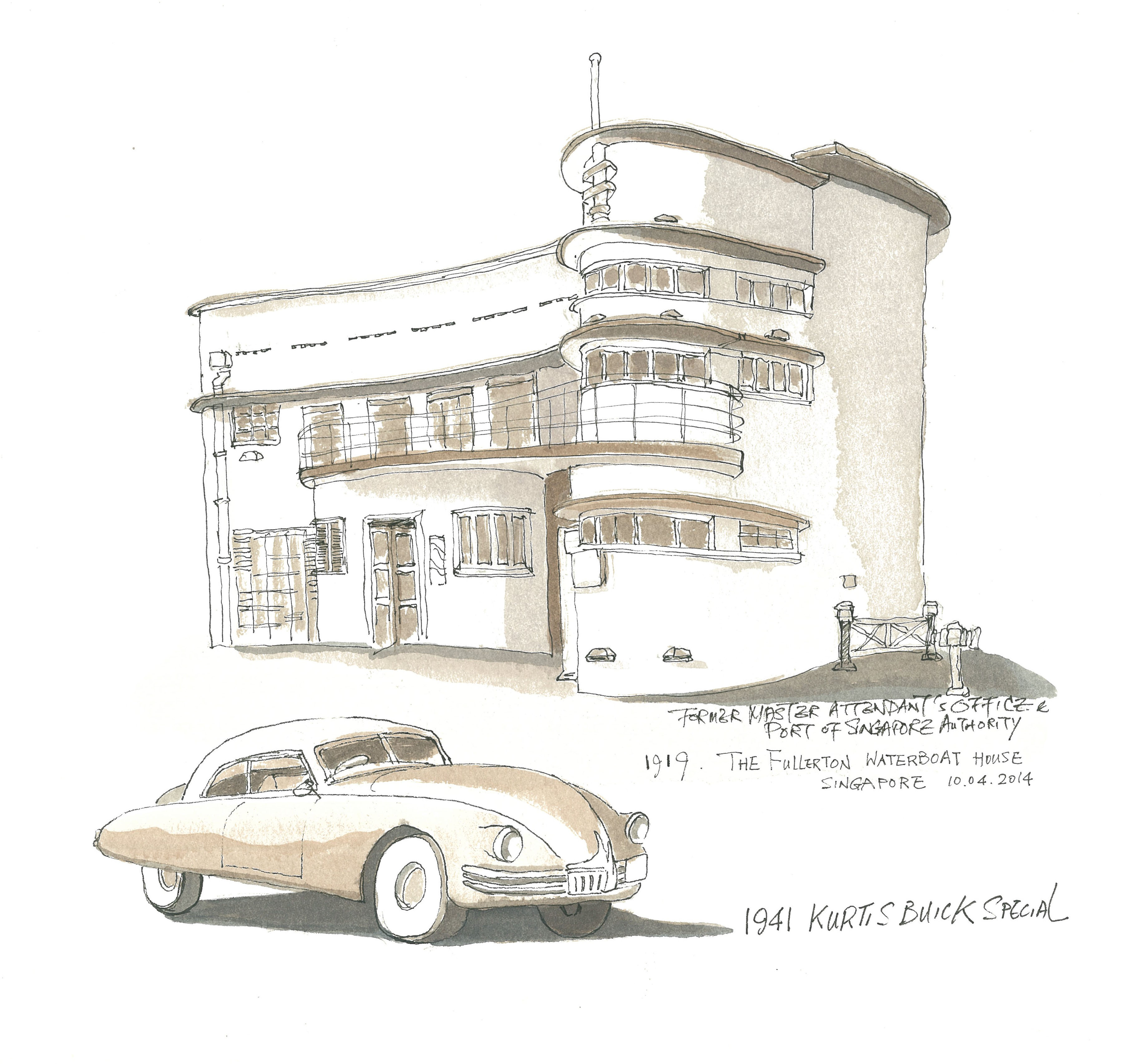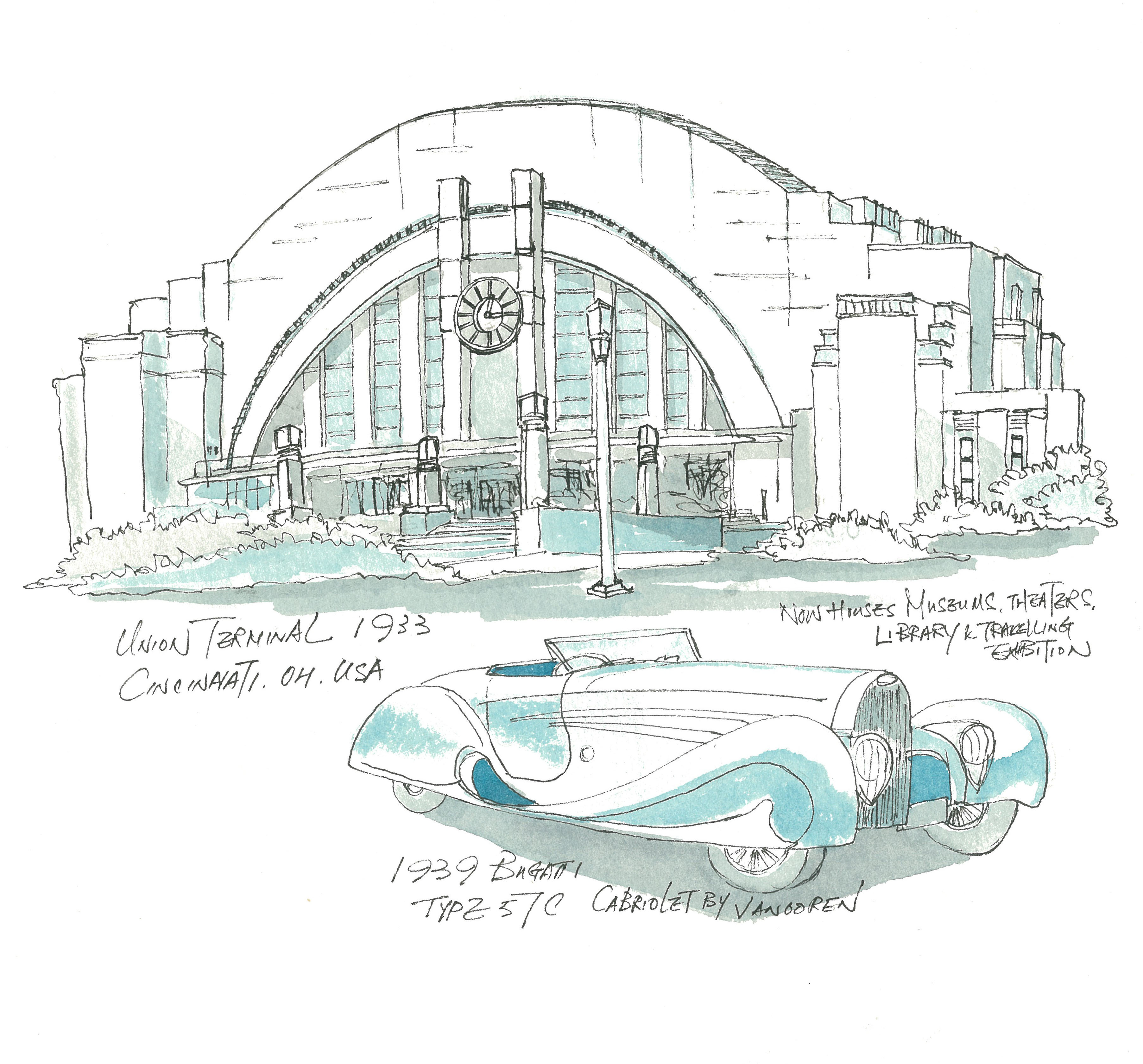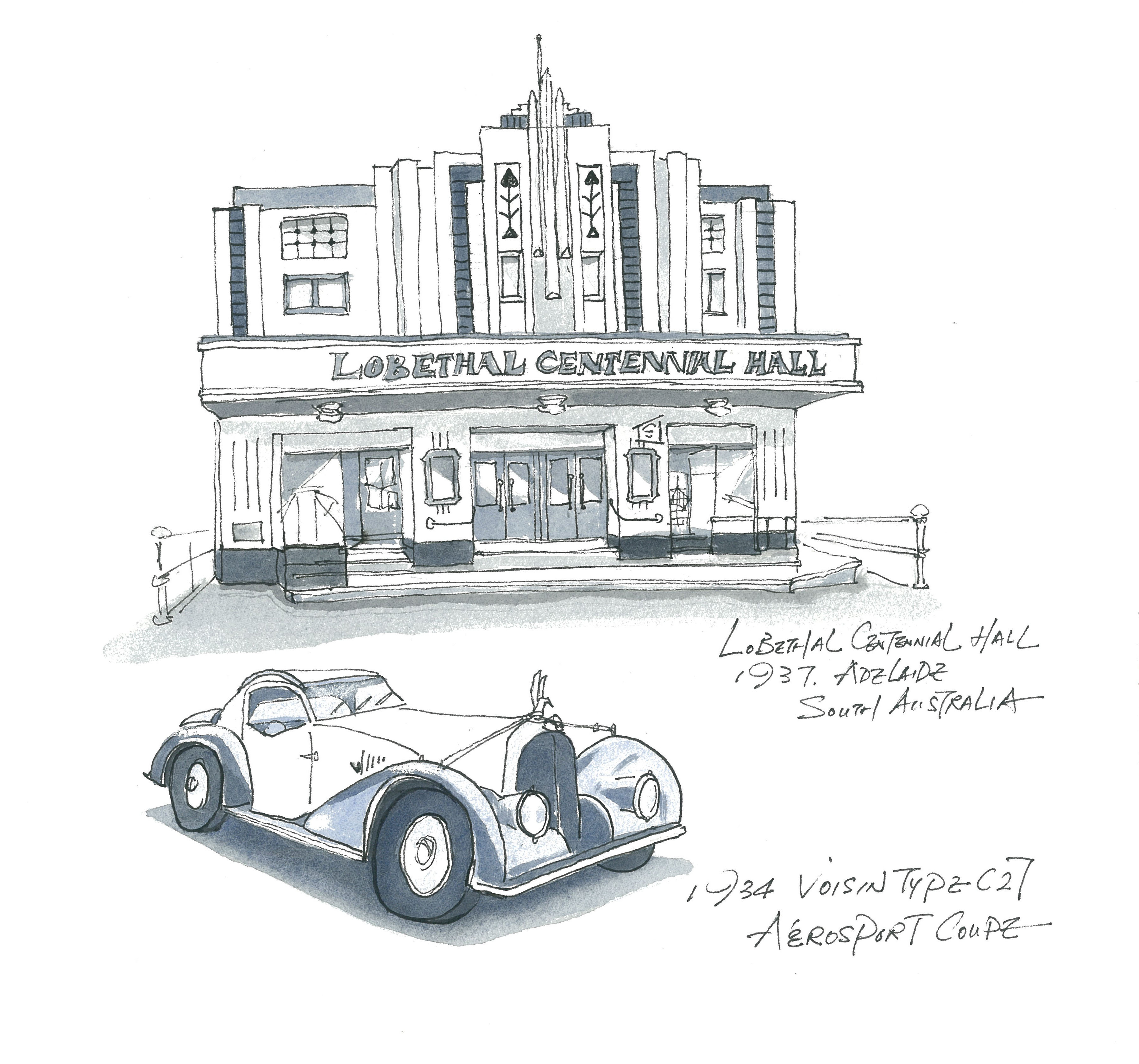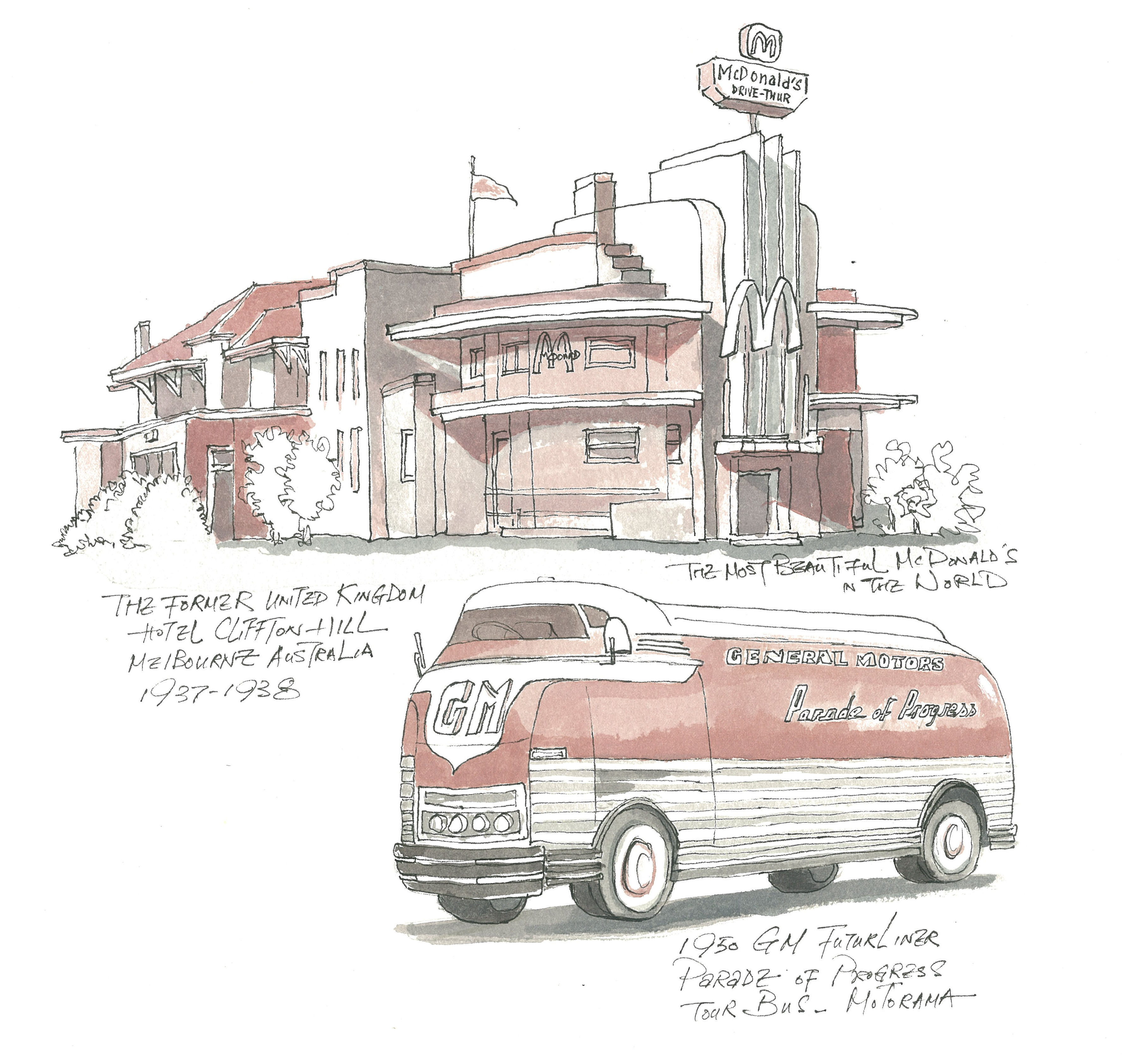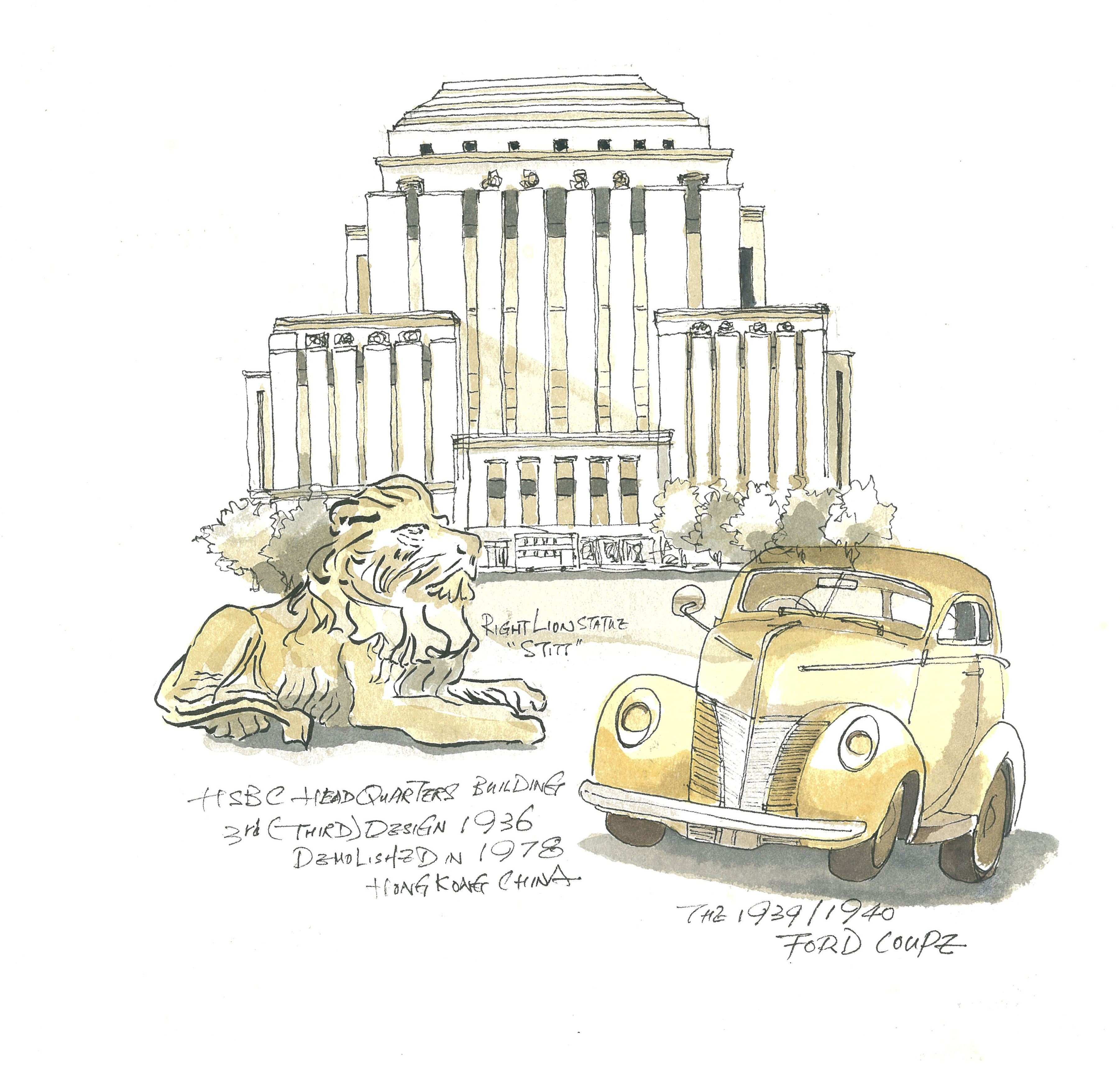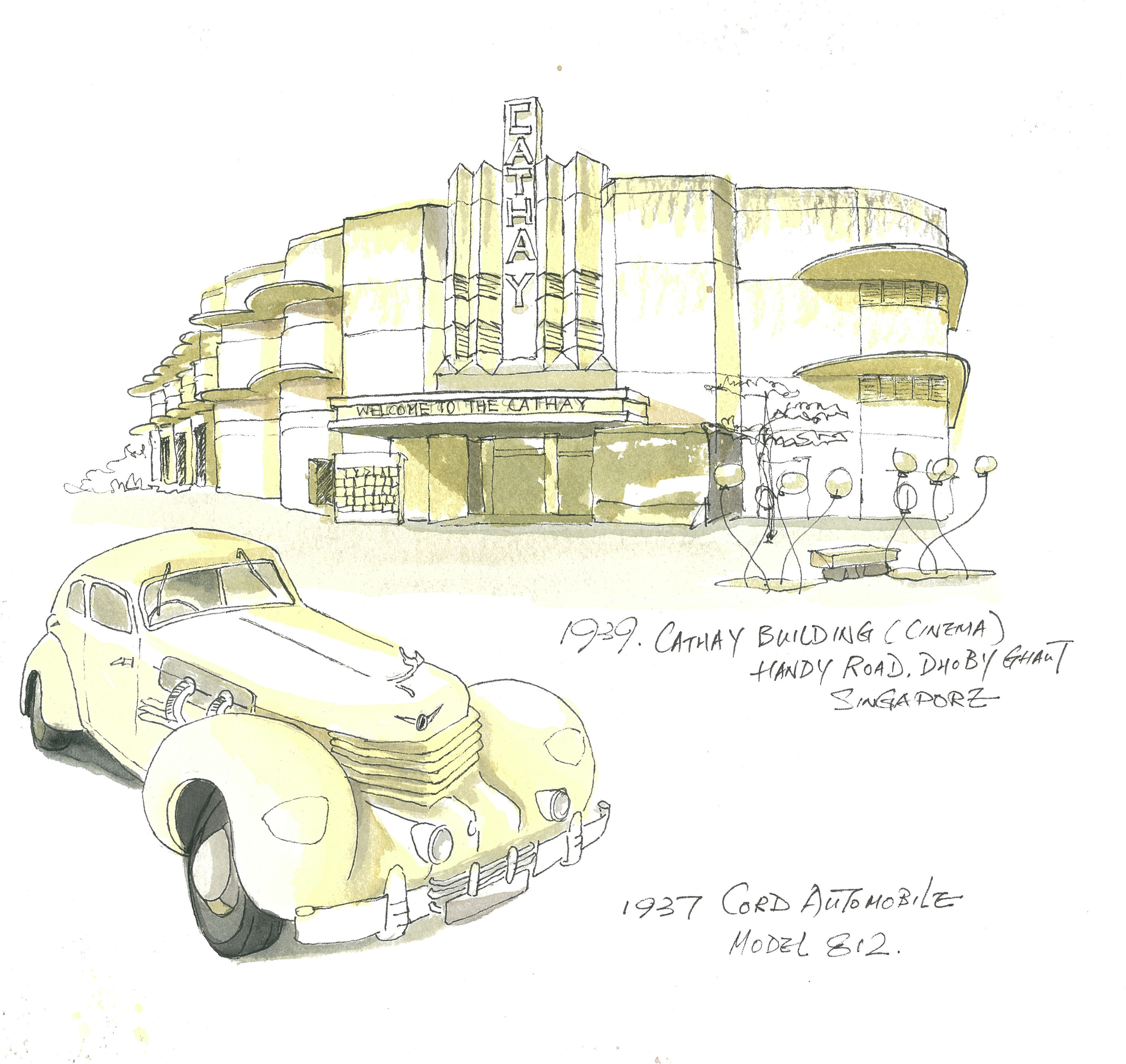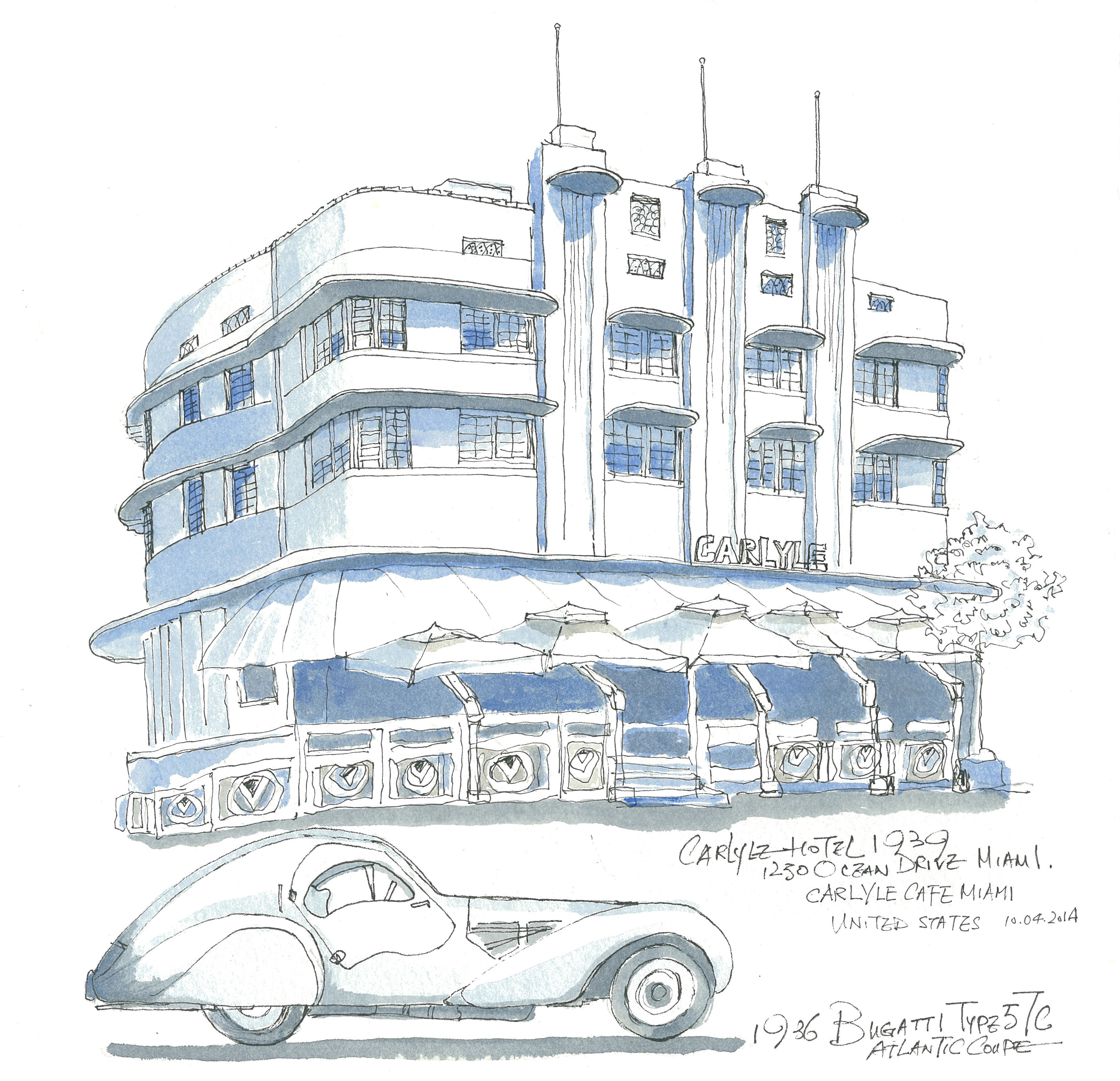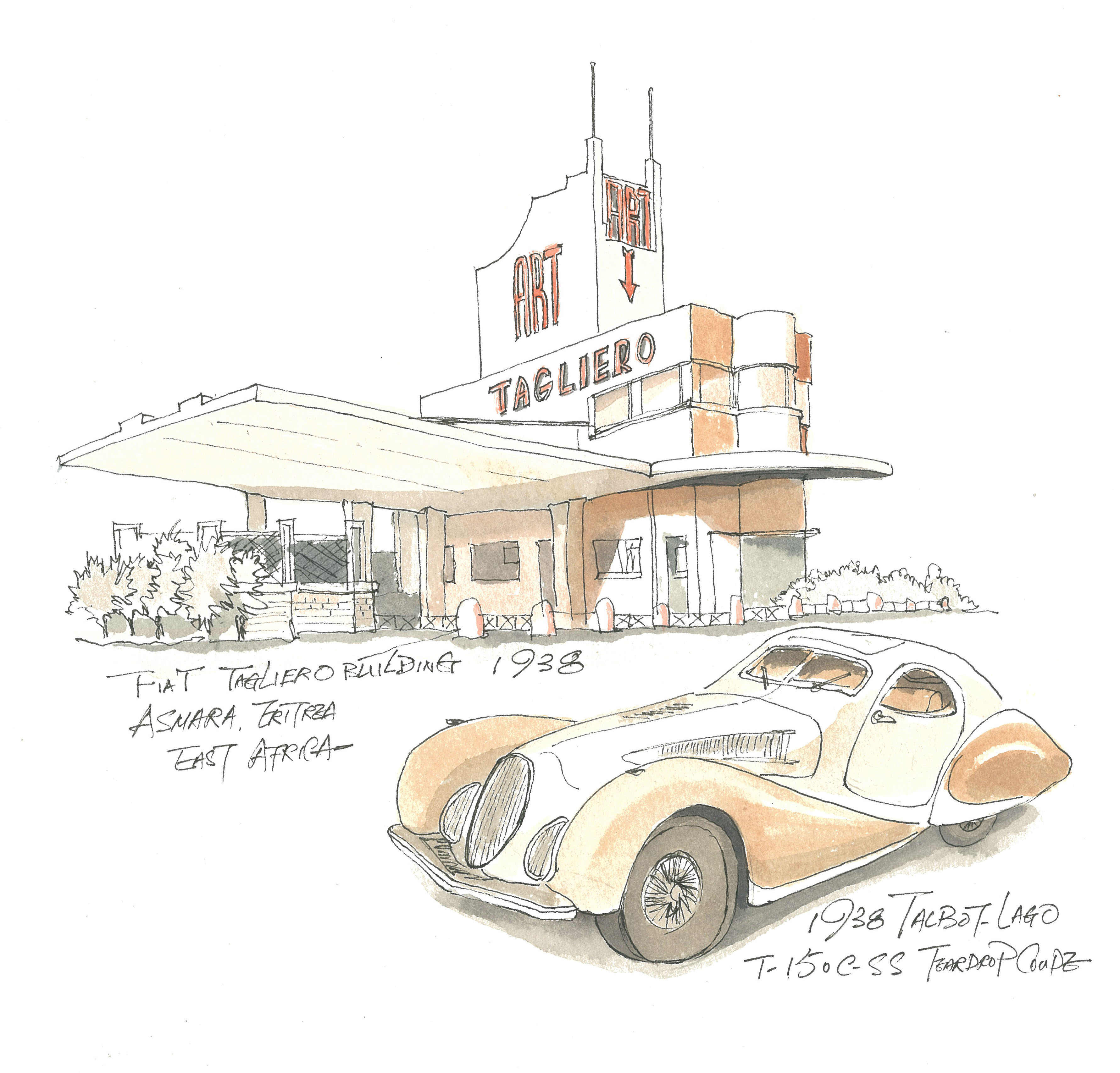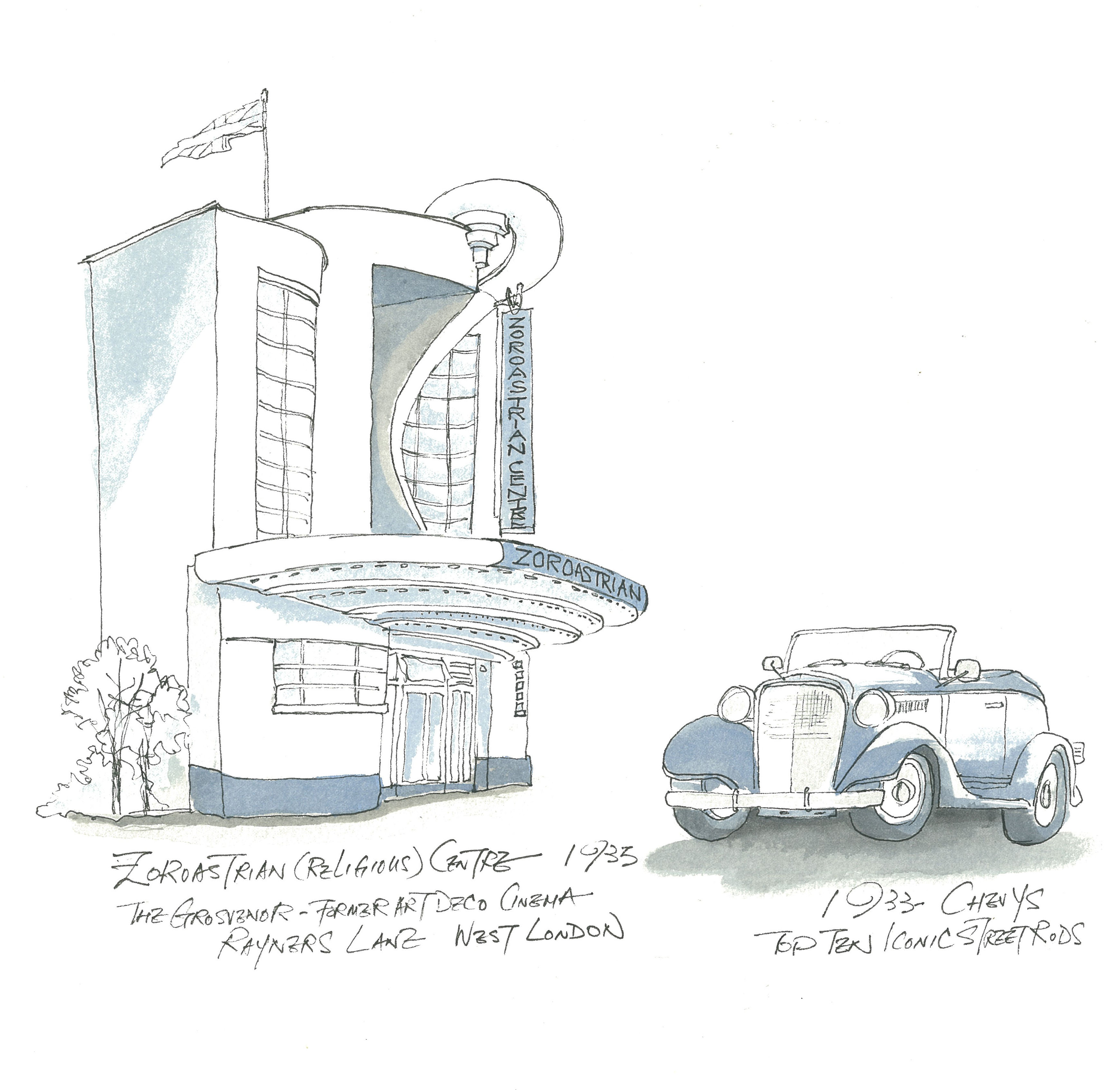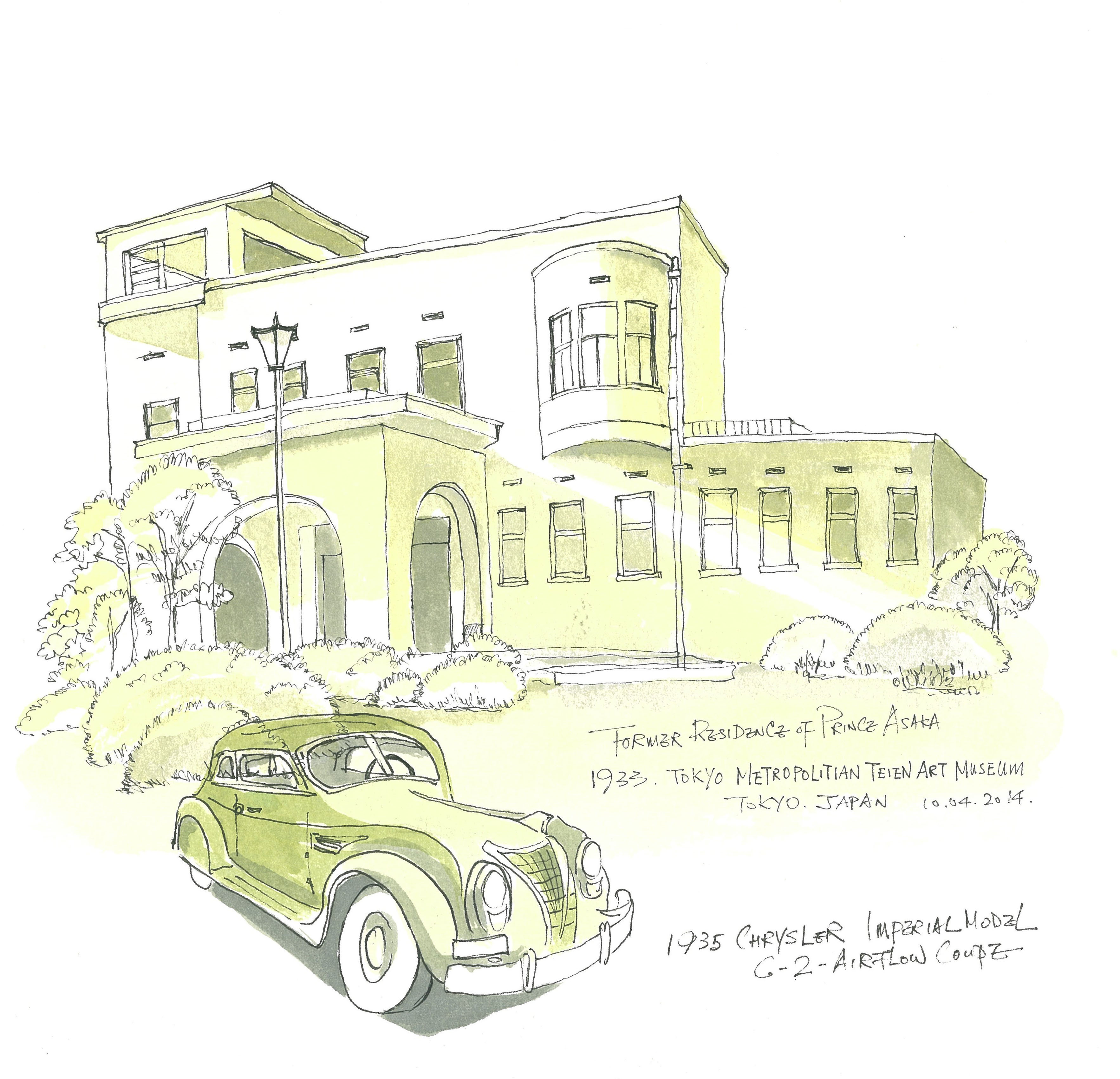Art Deco style in a “vehicle” of Design and Architecture
The creative impulses of Art Deco leave a trademark in buildings established during the glamorous Jazz age from mid-1930’s to 1940’s.
These buildings have remained a heritage of architecture up to nowadays and have never failed to impress us with the fine nuances of Art Deco in various forms, from the highly decorative classical form of Art Deco (in early 20’s) to its more practical, simple yet subtle, modern-esque variation in Art Moderne or Streamline Moderne in post-war period (50’s), when everything was yet to be taken up and therefore mass production was in an unprecedentedly high demand.
In this light, Art Deco could not be understood comprehensively without examining the external influences and socio-cultural inputs that conglomerate into a distinctive “Spirit of an Age”.
This series of ten drawings could be regarded as a tribute to this unique art style by expanding its scope from architecture to design, in an equally charming “vehicle”.
Ten charismatic buildings of Art Deco style selected around the world, especially in England, Miami, Singapore, HK and Japan are placed individually in each drawing, and thoughtfully paired with a vintage automobile of a similar style.
Not only are the building and automobile a perfect match in view of basic art elements such as line and colour, the years of their creation are also proximal to each other in a noteworthy coincidence.
In an oddly but nonetheless delightfully harmonious manner, the building and the automobile complement each other while enriching the drawing with shared features and an extended sense of Art Deco in their respective architecture and design.
These drawings are created by a self-evident Art Deco-phile in the hope to share his love and charming with those who are interested in Art Deco, as well as inspiring more people to appreciate its unique beauty and find out more about its fascinating history. It would shed light on this distinguished style of art in terms of its irreplaceable position in the evolution of architecture from classic to modern without losing sight to the historical and cultural climate that gave rise to it.
